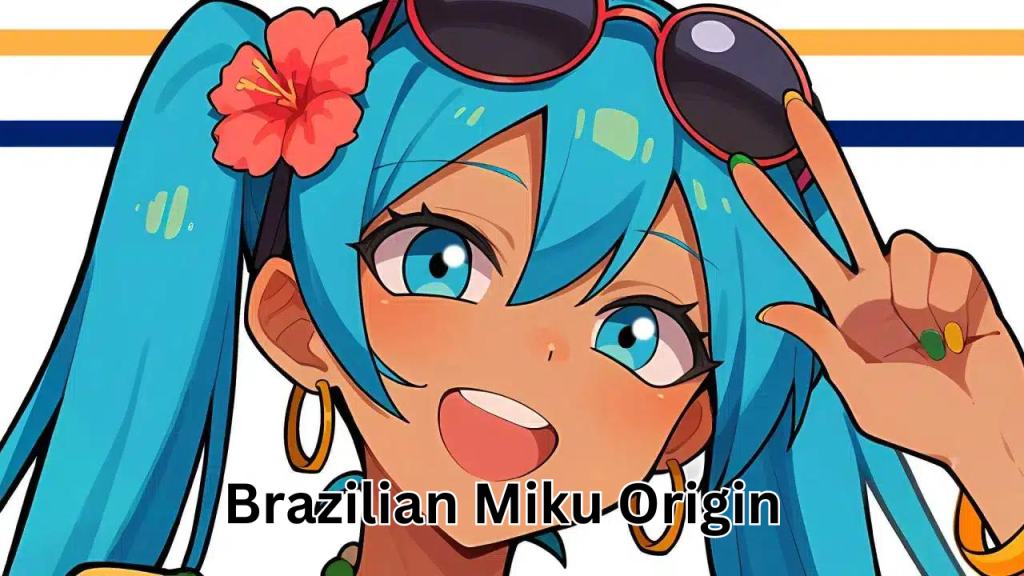Brazilian Miku: The origins of the viral meme that redefined Hatsune Miku
From turquoise-haired virtual pop star Hatsune Miku and her synthesized voice, fans have always found inspiration. In 2024, a new trend sprang up: Brazilian Miku Origin. The viral movement married Brazilian culture with the iconic design of Miku into this new thrilling version of the character. From a simple fan sketch, it blew up to become a global phenomenon, jumping from fan art into animations.
The Beginnings of Brazilian Miku
Brazilian Miku’s origin is from artist @ErinArtista in June 2024. The illustration that the post shared, which gave Miku a twist into Brazilian, had tanned skin, a crop top with the flag of Brazil, along with denim shorts. She was holding a can of Guaraná Antarctica, a famous drink in Brazil. The design mixed Miku with the quintessence of Brazil (Know Your Meme). Not too long after, the post became a massive hit and garnered several thousand reposts. Consequently, other artists followed the wave, making their own versions (Know Your Meme).
The trend was further amplified by animator @akioskdebap, who shared a video of Brazilian Miku dancing to Brazilian funk. The video went viral on TikTok, earning millions of views. Then there’s another classic instance of fan art from artist @thecat_mitsu that helped push the trend further .
What made Brazilian Miku go viral?
The Brazilian Miku Origin was successful due to several reasons. To begin with, the combination of Brazilian culture and Miku’s design was new and catching. Miku’s digital aesthetic found a good balance with Brazil’s energetic and tropical atmosphere. The immediately different combination captured the attention of Brazilian and international followers at once (Bored Panda)(Know Your Meme). Also, the timing of the trend being in summer also helped since the playful and carefree design of Brazilian Miku matched the mood of the season (Pictolic – Picture news).
Plus, social media platforms like X and TikTok made it super easy for fans to participate in whatever ways they could think of. Many created videos or remixes using Brazilian music to help push the trend (Know Your Meme)(Know Your Meme).
The Expansion: Miku of Every Country
Brazilian Miku’s success inspired the trend: Every Country’s Miku. International fans started producing their own versions of Hatsune Miku in traditional attire from their country. For example, France Miku was produced wearing fashion from Paris, and Vietnamese Miku was dressed in áo dài(Pictolic – Picture news)(Know Your Meme). This international remake of Miku enabled fanitudes to be culturally proud while also showing respect to the character flexibility of Miku(Know Your Meme).
Artistic and Musical Elements
The rise of Brazilian Miku Origin wasn’t just visual: musically, it called people to make Vocaloid songs that combined Brazilian genres of samba and bossa nova, where Miku sang in Portuguese with the backup of Brazilian rhythms(Pictolic – Picture news). On the visual side, the design of Brazilian Miku often stressed beach and summer themes. She was drawn tanned with tan lines, in sunglasses, and with vivid, tropical accessories, tying her further to Brazil’s culture(Bored Panda).
Cultural Impact of Brazilian Miku
It was the Brazilian Miku Origin that really developed this creativity by the fans. The following of these two worlds, so different in culture, merged Japanese pop culture with Brazilian traditions (Pictolic – Picture news). Other discourses were opened related to cultural appreciation and representation in this fan art. The fans loved seeing how Hatsune Miku would be taken into reflecting different cultures (Know Your Meme).
Conclusion
The Brazilian Miku Origin is a brilliant example of how fan art can transform a well-known character like Hatsune Miku and give her new life. By blending Miku’s digital style with Brazil’s rich culture, fans created a trend that resonated worldwide. The subsequent Every Country’s Miku movement demonstrated Miku’s global reach and the power of fan-driven creativity.


